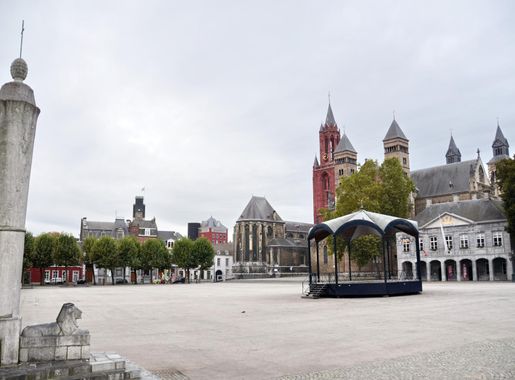
Maastricht: The Enchanting Crossroads of Europe
Discover Maastricht: A captivating blend of history, culture, and culinary delights in the heart of Europe. Explore its medieval streets, vibrant festivals, and gourmet cuisine.
Nestled in the southern tip of the Netherlands, Maastricht is a city that effortlessly blends history, culture, and modernity. Walking through its cobblestone streets, you'll find yourself stepping back in time, surrounded by medieval architecture and ancient churches. The city is renowned for its rich Roman history, and you can explore remnants of this past at the Roman baths and the old city walls. Maastricht is also a hub of vibrant cultural life. The city hosts a variety of festivals, art exhibitions, and music events throughout the year. The scenic Vrijthof Square is a focal point, brimming with cafes, restaurants, and the stunning Basilica of Saint Servatius. Don’t miss the Bonnefanten Museum, which houses an impressive collection of old masters and contemporary art. For those who love shopping and dining, the city offers a delightful mix of high-end boutiques, local markets, and gourmet restaurants. The Wyck district, in particular, is perfect for a leisurely stroll, offering unique shops and cozy eateries. Maastricht's culinary scene is a blend of Dutch, Belgian, and French influences, making it a paradise for foodies. Maastricht's charm lies not just in its attractions but in its atmosphere. The city is small enough to explore on foot or by bicycle, yet it offers a cosmopolitan vibe. Whether you're interested in history, art, or simply enjoying a good meal, Maastricht is a destination that promises a memorable experience.
Local tips in Maastricht
- Visit the St. Pietersberg Caves for a unique underground adventure.
- Try the local dish 'zoervleis,' a sweet and sour beef stew.
- Rent a bike to explore the city like a local.
- Check out the Friday market at Market Square for fresh produce and local goods.
- Take a boat tour on the Maas River for a different perspective of the city.
Maastricht: The Enchanting Crossroads of Europe
Nestled in the southern tip of the Netherlands, Maastricht is a city that effortlessly blends history, culture, and modernity. Walking through its cobblestone streets, you'll find yourself stepping back in time, surrounded by medieval architecture and ancient churches. The city is renowned for its rich Roman history, and you can explore remnants of this past at the Roman baths and the old city walls. Maastricht is also a hub of vibrant cultural life. The city hosts a variety of festivals, art exhibitions, and music events throughout the year. The scenic Vrijthof Square is a focal point, brimming with cafes, restaurants, and the stunning Basilica of Saint Servatius. Don’t miss the Bonnefanten Museum, which houses an impressive collection of old masters and contemporary art. For those who love shopping and dining, the city offers a delightful mix of high-end boutiques, local markets, and gourmet restaurants. The Wyck district, in particular, is perfect for a leisurely stroll, offering unique shops and cozy eateries. Maastricht's culinary scene is a blend of Dutch, Belgian, and French influences, making it a paradise for foodies. Maastricht's charm lies not just in its attractions but in its atmosphere. The city is small enough to explore on foot or by bicycle, yet it offers a cosmopolitan vibe. Whether you're interested in history, art, or simply enjoying a good meal, Maastricht is a destination that promises a memorable experience.
When is the best time to go to Maastricht?
Iconic landmarks you can’t miss
Tiqets
Experience Amsterdam like never before with Tiqets, your ultimate e-commerce service for hassle-free access to the city's top attractions.
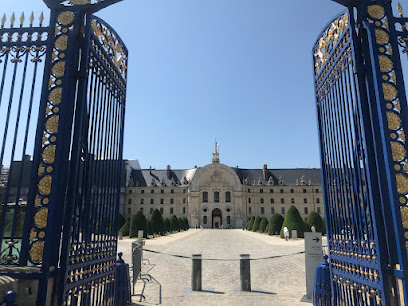
Old Market
Experience the historical charm of Cologne's Old Market, a vibrant square filled with culinary delights, unique shopping, and rich cultural heritage.
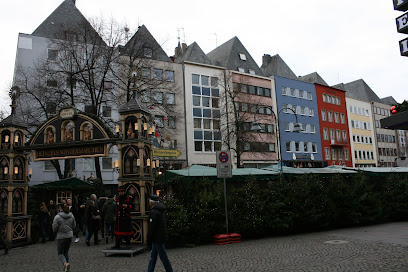
Basilica of Saint Nicholas
Discover the Basilica of Saint Nicholas, an architectural masterpiece in Amsterdam, blending spirituality, history, and stunning Baroque design.
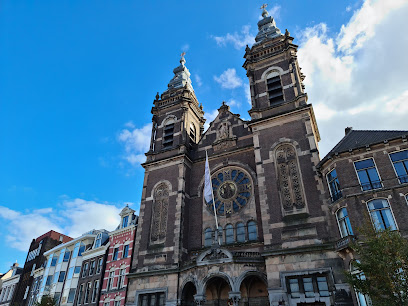
Fish Market
Discover the bustling Fish Market in Cologne, where fresh seafood and local culture come together in a vibrant riverside atmosphere.
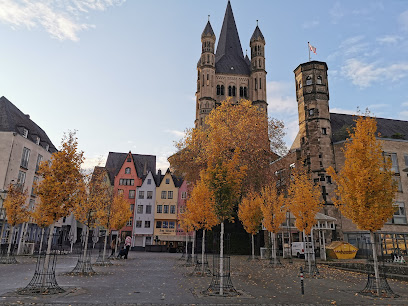
Freewalk Cologne UG
Discover Cologne's history and culture through engaging free walking tours led by passionate guides in the heart of the city.
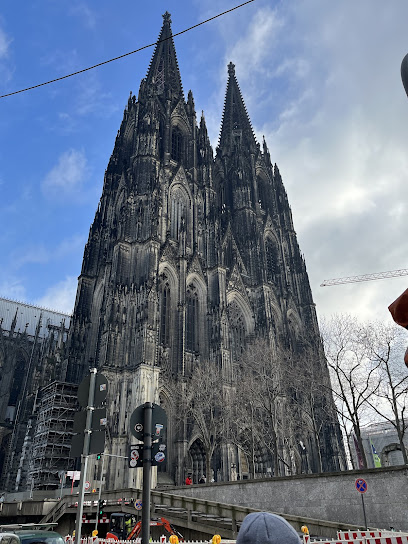
Ezelpoort
Discover Ezelpoort, a stunning medieval gate in Bruges, Belgium, revealing the city's rich history and beautiful landscapes.
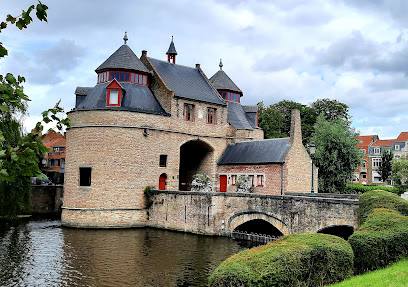
Flying Pins
Experience the captivating Flying Pins sculpture in Eindhoven, a vibrant symbol of creativity and urban life, perfect for art enthusiasts and casual visitors alike.

Church of St. Ursula
Discover the Church of St. Ursula in Cologne, a stunning Catholic church known for its unique skeletal room and breathtaking Gothic architecture.
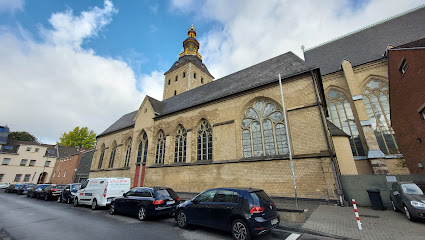
St. Maria im Kapitol
Explore St. Maria im Kapitol, a stunning Catholic church in Cologne, rich in history and breathtaking architecture, perfect for spiritual reflection.
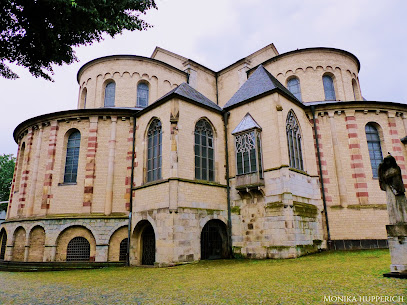
Rheinpromenade Köln-Deutz
Experience the scenic beauty of Cologne at the Rheinpromenade, a picturesque riverside promenade with stunning views and vibrant atmosphere.

Fonske (statue)
Discover the Fonske statue in Leuven, Belgium, a cultural landmark symbolizing knowledge and a hub for local life and tourism.
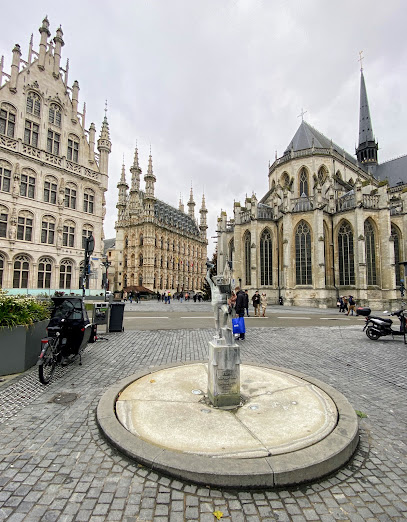
Me And All Hotel Dusseldorf Oberkassel - JDV by Hyatt
Discover contemporary elegance and local charm at Me And All Hotel Düsseldorf Oberkassel, your gateway to exploring vibrant Düsseldorf.
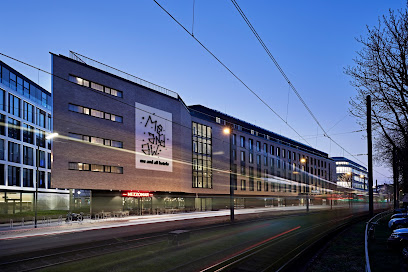
Römerturm
Explore the Römerturm, a remarkable historical landmark in Cologne, showcasing the city's Roman heritage and architectural beauty.
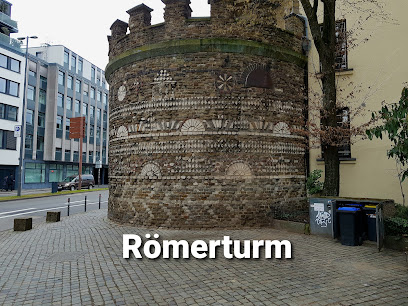
Hovenring
Discover the Hovenring, Eindhoven's iconic floating bridge, a stunning blend of art, architecture, and nature perfect for leisurely walks and memorable photos.
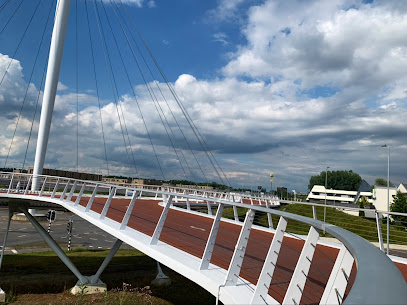
Basilica of St. Cunibert
Explore the stunning Basilica of St. Cunibert in Cologne, where history, spirituality, and architectural beauty intertwine to create a captivating experience.
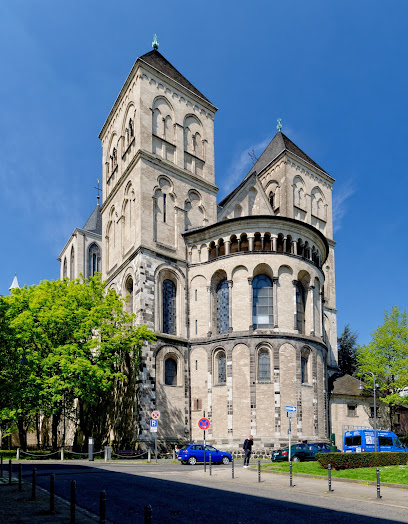
Unmissable attractions to see
Aachen Cathedral
Discover the architectural marvel of Aachen Cathedral, a UNESCO World Heritage Site rich in history and stunning Gothic artistry.
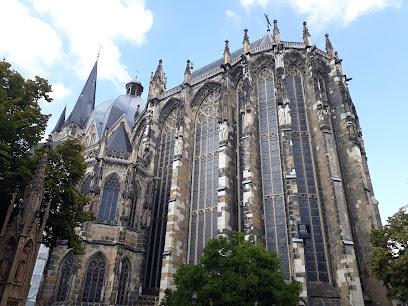
Book Store Dominicanen
Discover the enchanting Book Store Dominicanen in Maastricht, where literature meets history in a stunning former church setting.
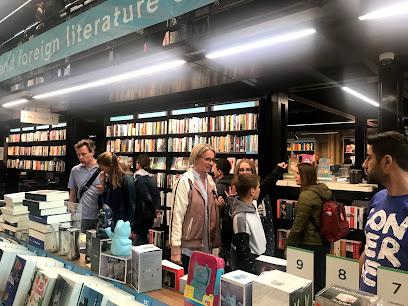
Labyrinth Three Countries Point
Experience the magic of Labyrinth Three Countries Point, where adventure meets nature at the crossroads of the Netherlands, Belgium, and Germany.

Parc Boverie
Experience the natural beauty and cultural richness of Parc Boverie, a must-visit park in Liège for all nature and art lovers.
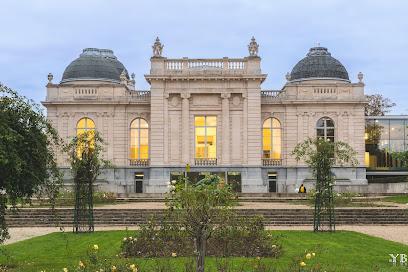
Carolus Thermen
Experience the rejuvenating powers of thermal baths and spa treatments at Aachen's Carolus Thermen, a sanctuary of relaxation and wellness.
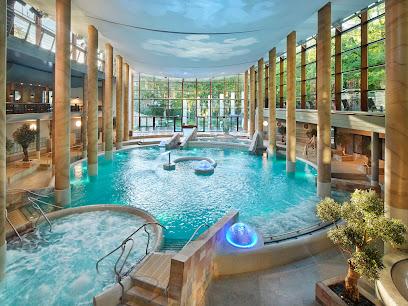
Elisenbrunnen
Discover the historical grandeur of Elisenbrunnen, a majestic fountain in Aachen, Germany, known for its stunning architecture and healing waters.
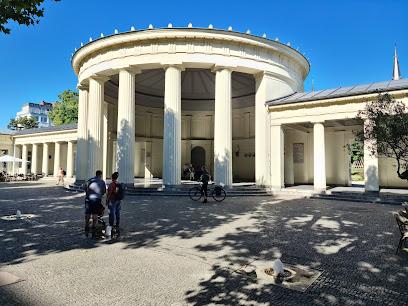
Gemeentegrot
Discover the historic Gemeentegrot in Valkenburg, an enchanting underground cave with rich history and stunning geological formations.

Thermae 2000
Discover ultimate relaxation at Thermae 2000 in Valkenburg, where thermal baths and wellness meet stunning natural beauty.
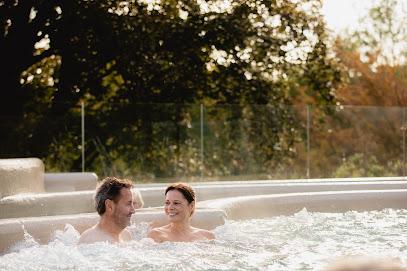
Plopsa Indoor Hasselt
Discover the magic of Plopsa Indoor Hasselt, where thrilling rides and beloved characters create unforgettable family fun in Belgium's vibrant theme park.
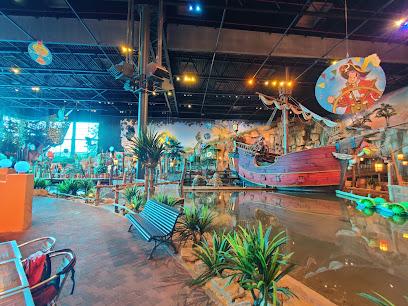
Japanese Garden
Discover tranquility and beauty at the Japanese Garden in Hasselt, Belgium's largest Japanese garden, a perfect retreat for nature lovers and cultural enthusiasts.
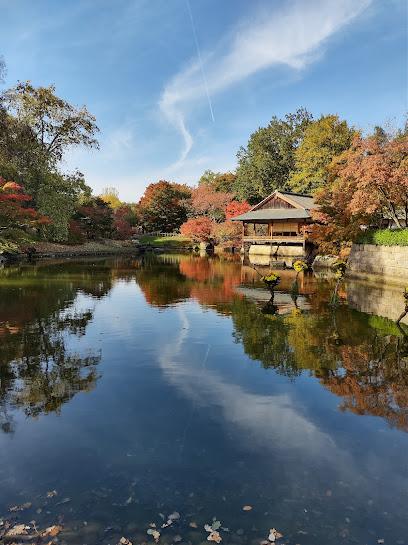
Fort Eben-Emael
Discover the intriguing history of Fort Eben-Emael, a military fortress in Liège that shaped Belgium's wartime narrative amidst breathtaking landscapes.
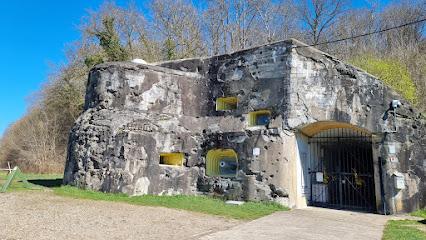
Aquarium-Museum of Liège
Discover the mesmerizing underwater world and rich biodiversity at the Aquarium-Museum of Liège, a unique attraction for all ages.
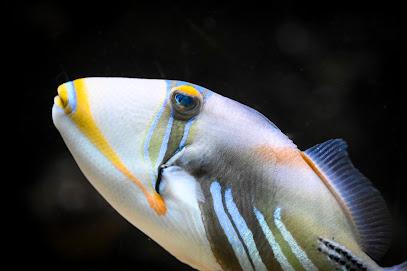
Basilica of Our Lady
Explore the breathtaking Basilica of Our Lady in Maastricht, a stunning Romanesque church that embodies the city's rich history and architectural beauty.
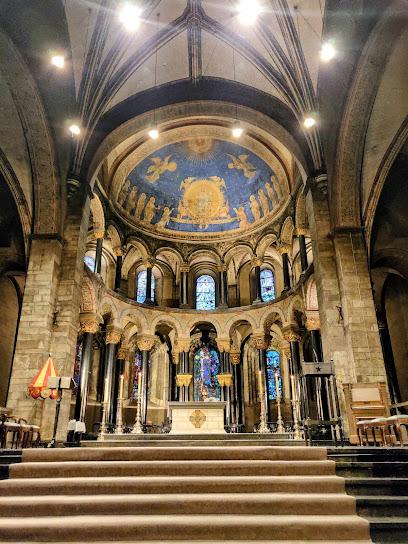
New Tivoli
Discover the vibrant atmosphere of New Tivoli, Aachen's premier stadium for unforgettable events and live performances.
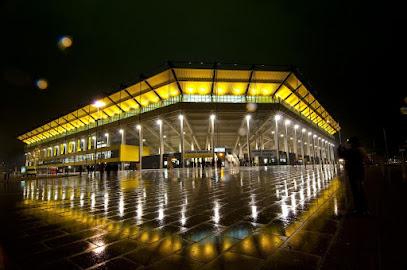
Herkenrode Abbey
Explore the serene beauty of Herkenrode Abbey, a historic Cistercian monastery surrounded by nature and cultural heritage in Hasselt, Belgium.
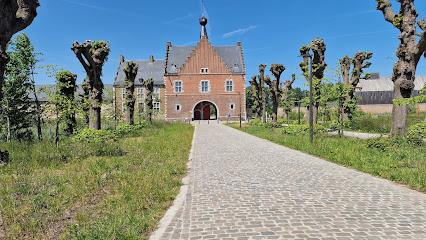
Local Phrases
-
- HelloHallo
[ha-lo] - GoodbyeDoei
[doo-i] - YesJa
[ya] - NoNee
[nee] - Please/You're welcomeAlstublieft
[al-stu-bleeft] - Thank youDank je wel
[dank ye vel] - Excuse me/SorrySorry
[so-ree] - How are you?Hoe gaat het met je?
[hu guat hut met ye] - Fine. And you?Goed. En met jou?
[gut. en met yow] - Do you speak English?Spreek je Engels?
[sprek ye engels] - I don't understandIk begrijp het niet
[ik buh-greip hut neet]
- HelloHallo
-
- I'd like to see the menu, pleaseMag ik de menukaart zien, alstublieft
[makh ik duh mei-nu-kart seen, al-stu-bleeft] - I don't eat meatIk eet geen vlees
[ik ate khan flays] - Cheers!Proost!
[prost] - I would like to pay, pleaseIk wil graag betalen, alstublieft
[ik vil khraakh buh-ta-lan, al-stu-bleeft]
- I'd like to see the menu, pleaseMag ik de menukaart zien, alstublieft
-
- Help!Help!
[help] - Go away!Ga weg!
[ga wekh] - Call the Police!Bel de politie!
[bel duh po-li-see] - Call a doctor!Bel een dokter!
[bel an dohk-ter] - I'm lostIk ben verdwaald
[ik ben fer-dwahld] - I'm illIk ben ziek
[ik ben zee-k]
- Help!Help!
-
- I'd like to buy...Ik wil graag kopen...
[ik vil khraakh khoh-pen] - I'm just lookingIk kijk alleen maar
[ik kayk al-leyn mar] - How much is it?Hoeveel kost het?
[hu-vel kost hut] - That's too expensiveDat is te duur
[dat is tuh dyur] - Can you lower the price?Kunt u de prijs verlagen?
[kunt u duh prays vuh-rah-lan]
- I'd like to buy...Ik wil graag kopen...
-
- What time is it?Hoe laat is het?
[hu lat is hut] - It's one o'clockHet is een uur
[hut is an oor] - Half past (10)Half elf
[half elf] - MorningOchtend
[okh-tend] - AfternoonMiddag
[mid-dakh] - EveningAvond
[ah-vohnd] - YesterdayGisteren
[khis-ter-en] - TodayVandaag
[van-dakh] - TomorrowMorgen
[mor-khen] - 1Een
[ane] - 2Twee
[tweh] - 3Drie
[dree] - 4Vier
[veer] - 5Vijf
[vayf] - 6Zes
[zehs] - 7Zeven
[zay-ven] - 8Acht
[akht] - 9Negen
[nay-khen] - 10Tien
[teen]
- What time is it?Hoe laat is het?
-
- Where's a/the...?Waar is de...?
[var is duh] - What's the address?Wat is het adres?
[vat is hut ah-dres] - Can you show me (on the map)?Kunt u het mij laten zien (op de kaart)?
[kunt u hut may la-ten seen (op duh kart)] - When's the next (bus)?Wanneer is de volgende (bus)?
[vhen-er is duh vol-hen-duh (bus)] - A ticket (to ....)Een kaartje (naar ....)
[ane kart-ye (nar)]
- Where's a/the...?Waar is de...?
History of Maastricht
-
Maastricht's history dates back to Roman times when it was known as 'Mosae Trajectum,' meaning 'crossing at the Meuse.' A bridge was built here in the 1st century AD, making it an important crossing point and settlement. Remnants of Roman architecture, such as parts of the bridge and ancient roads, can still be seen in the city today.
-
During the Middle Ages, Maastricht became a fortified city due to its strategic location. The city walls, parts of which still stand today, were constructed to protect against invaders. The Helpoort, or 'Hell's Gate,' is the oldest city gate in the Netherlands, dating back to the 13th century, and offers a glimpse into the medieval defenses of Maastricht.
-
Maastricht has long been a center of religious significance, particularly during the medieval period. The Basilica of Saint Servatius, founded in the 4th century, is one of the oldest churches in the Netherlands. It houses the relics of Saint Servatius, the first bishop of Maastricht. The city is also home to the striking Gothic church, the Basilica of Our Lady, which has been a pilgrimage site for centuries.
-
In the late 16th century, Maastricht became a focal point in the Eighty Years' War between the Dutch and the Spanish. The city was captured by the Spanish in 1579 but later fell to the Dutch Republic in 1632. In the 17th and 18th centuries, Maastricht was repeatedly besieged and occupied by French forces, reflecting its strategic importance in European conflicts.
-
The 19th century brought industrialization to Maastricht, transforming it from a medieval town to a modern city. The establishment of factories, particularly in ceramics and glass, spurred economic growth. The Sphinx ceramics factory, founded in 1834, became a symbol of this industrial boom. Today, the former industrial areas have been redeveloped into cultural and residential spaces, such as the trendy Sphinxkwartier.
-
One of the most significant modern events in Maastricht's history is the signing of the Maastricht Treaty in 1992. This treaty led to the creation of the European Union and the introduction of the euro as a common currency. The treaty was signed in the historic Government Building on the Meuse River, cementing Maastricht's role in the shaping of contemporary Europe.
-
Today, Maastricht is known for its vibrant cultural scene. The city hosts numerous festivals, such as the annual TEFAF (The European Fine Art Fair), one of the world's leading art fairs. The Bonnefanten Museum, with its impressive collection of contemporary and old master art, further highlights Maastricht's cultural significance. The city's blend of historic architecture and modern cultural institutions makes it a unique destination in the Netherlands.
Maastricht Essentials
-
Maastricht is well-connected and accessible by various modes of transportation. The nearest international airport is Maastricht Aachen Airport, located about 10 kilometers from the city center. Alternatively, you can fly into Brussels Airport or Amsterdam Schiphol Airport and take a train to Maastricht. Maastricht is also easily reachable by train from major European cities. The city has a central train station, Maastricht Centraal, which is well-connected to the Dutch railway network and international routes. If you prefer driving, Maastricht is accessible via the A2 and A79 motorways.
-
Maastricht has an efficient public transport system, including buses and trains, operated by Arriva. The city center is compact and walkable, making it easy to explore on foot. Biking is also a popular option, and there are several bike rental shops available. For longer distances, taxis and rideshare services like Uber are readily available. If you plan to explore the surrounding countryside, renting a car can be a convenient option.
-
The official currency in the Netherlands is the Euro (EUR). Credit and debit cards are widely accepted in hotels, restaurants, and shops. However, it is advisable to carry some cash for smaller establishments and markets. ATMs are easily found throughout the city, and most machines accept international cards. Contactless payments are also popular and accepted in most places.
-
Maastricht is generally a safe city for tourists. However, like any urban area, it is important to take standard precautions. Be aware of pickpockets, especially in crowded places like markets and public transport. Avoid walking alone at night in poorly lit areas. The neighborhoods of Wyck and the city center are generally safe, but exercise caution in parts of the Boschstraatkwartier area, especially after dark.
-
In case of an emergency, dial 112 for immediate assistance from police, fire, or medical services. Maastricht has several hospitals, including the Maastricht University Medical Center (MUMC+), which provides comprehensive medical care. Pharmacies are widely available for minor health issues. It is recommended to have travel insurance that covers medical emergencies.
-
Fashion: Do dress smart-casual, especially when dining out or visiting cultural sites. Avoid overly casual or beachwear in the city center. Religion: Do be respectful when visiting religious sites. Remove hats and avoid loud conversations. Public Transport: Do be punctual and respectful of other passengers. Don’t forget to check in and out with your OV-chipkaart (public transport card). Greetings: Do greet people with a handshake and maintain eye contact. A friendly 'Hallo' or 'Goedemorgen' is appreciated. Eating & Drinking: Do try local specialties like 'vlaai' (a type of pie) and 'zoervleis' (a sweet and sour beef stew). Don’t rush meals; dining is often a leisurely activity in Maastricht.
-
To experience Maastricht like a local, visit the Markt on Wednesdays and Fridays for fresh produce and local delicacies. Enjoy a coffee at one of the many cafés in the Vrijthof square, a central hub for social activity. Explore the Jekerkwartier, a picturesque neighborhood with charming streets and hidden courtyards. Don’t miss the opportunity to cycle along the Maas River for scenic views. Engage with locals; they are known for their friendliness and willingness to share insights about the city’s history and culture.
Trending Landmark in Maastricht
Nearby Cities to Maastricht
-
Things To Do in Genk
-
Things To Do in Aachen
-
Things To Do in Hasselt
-
Things To Do in Liege
-
Things To Do in Spa
-
Things To Do in Eindhoven
-
Things To Do in Durbuy
-
Things To Do in Leuven
-
Things To Do in Dusseldorf
-
Things To Do in Namur
-
Things To Do in La Roche-en-Ardenne
-
Things To Do in Cologne
-
Things To Do in Louvain-la-Neuve
-
Things To Do in Mechelen
-
Things To Do in Dinant

